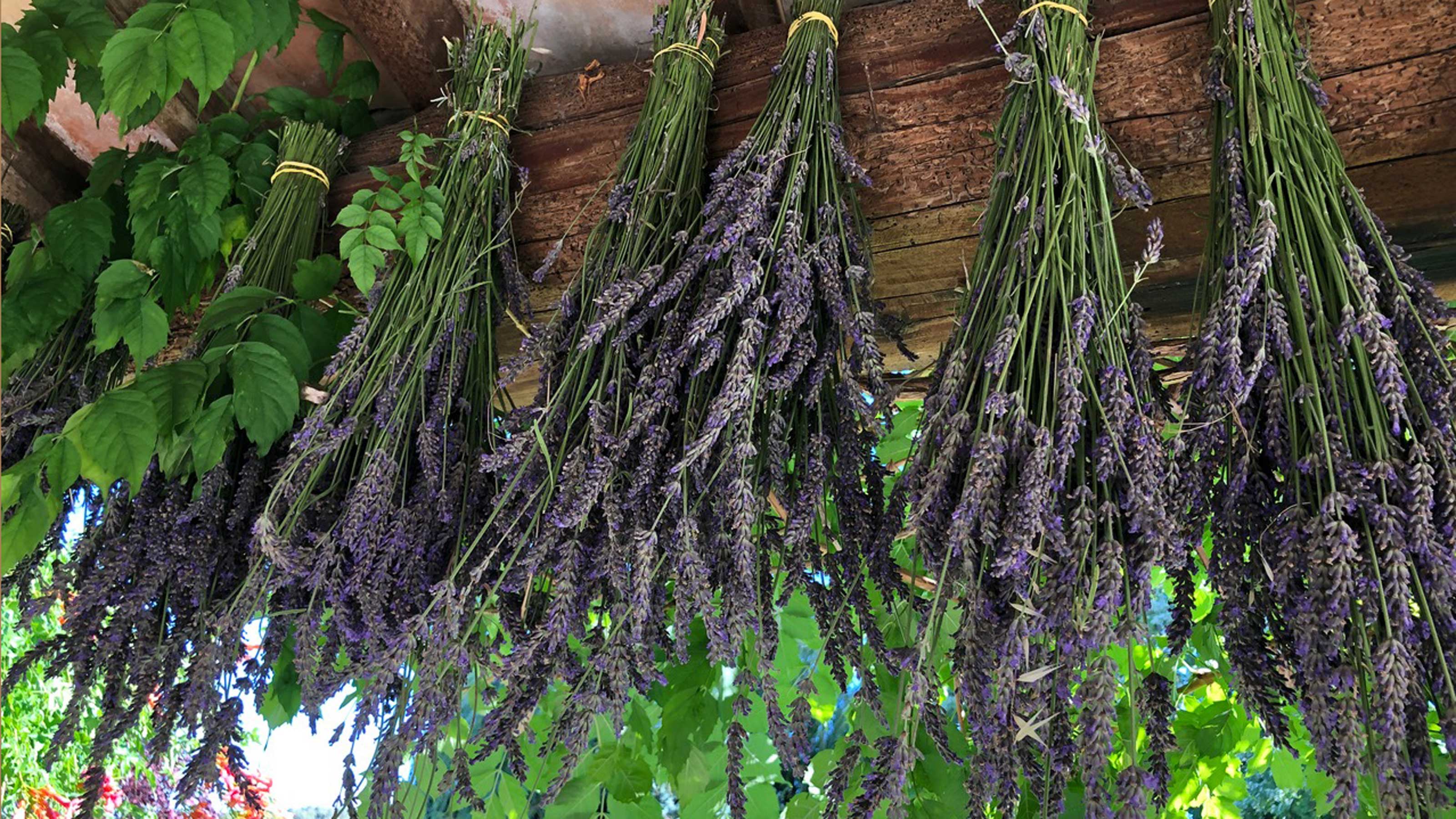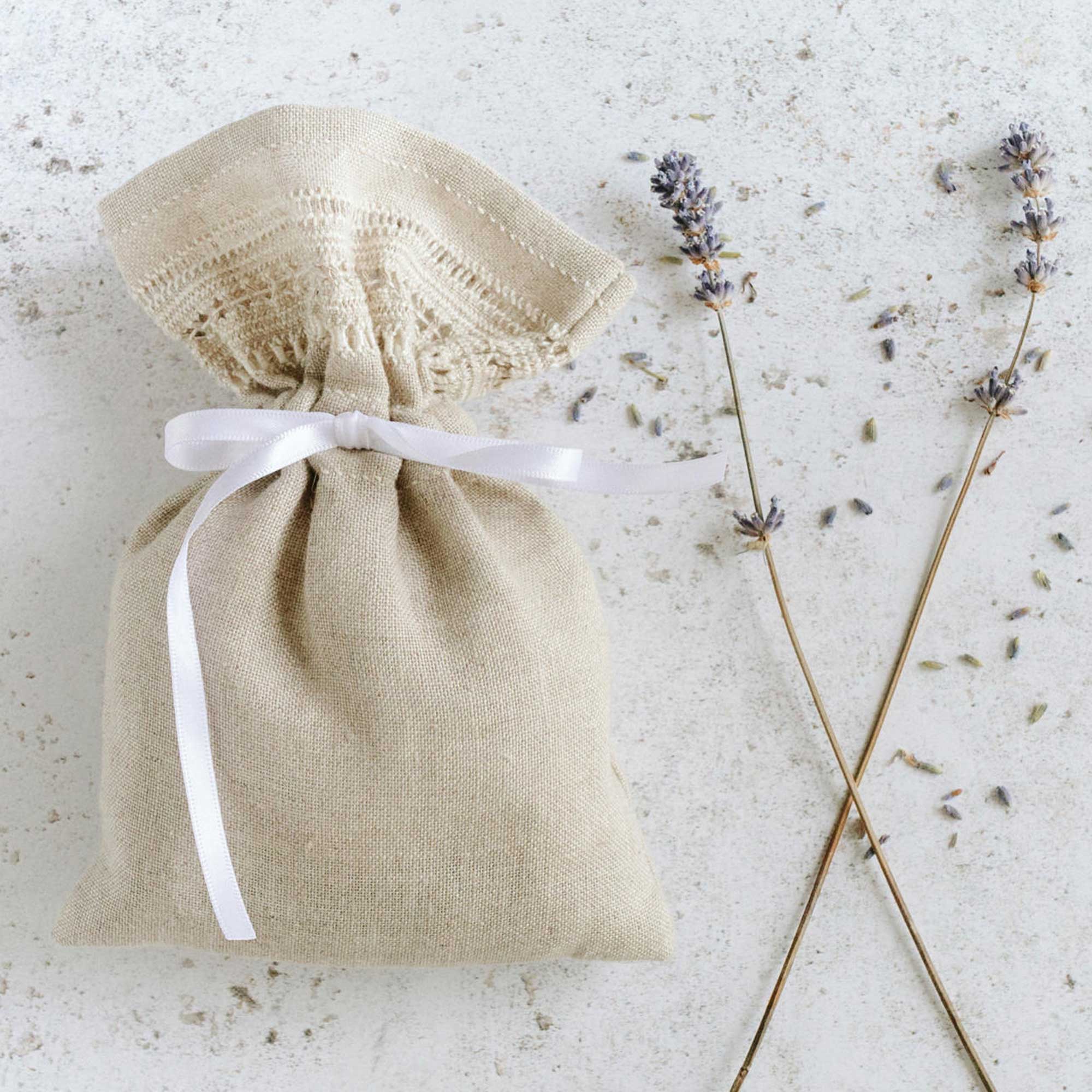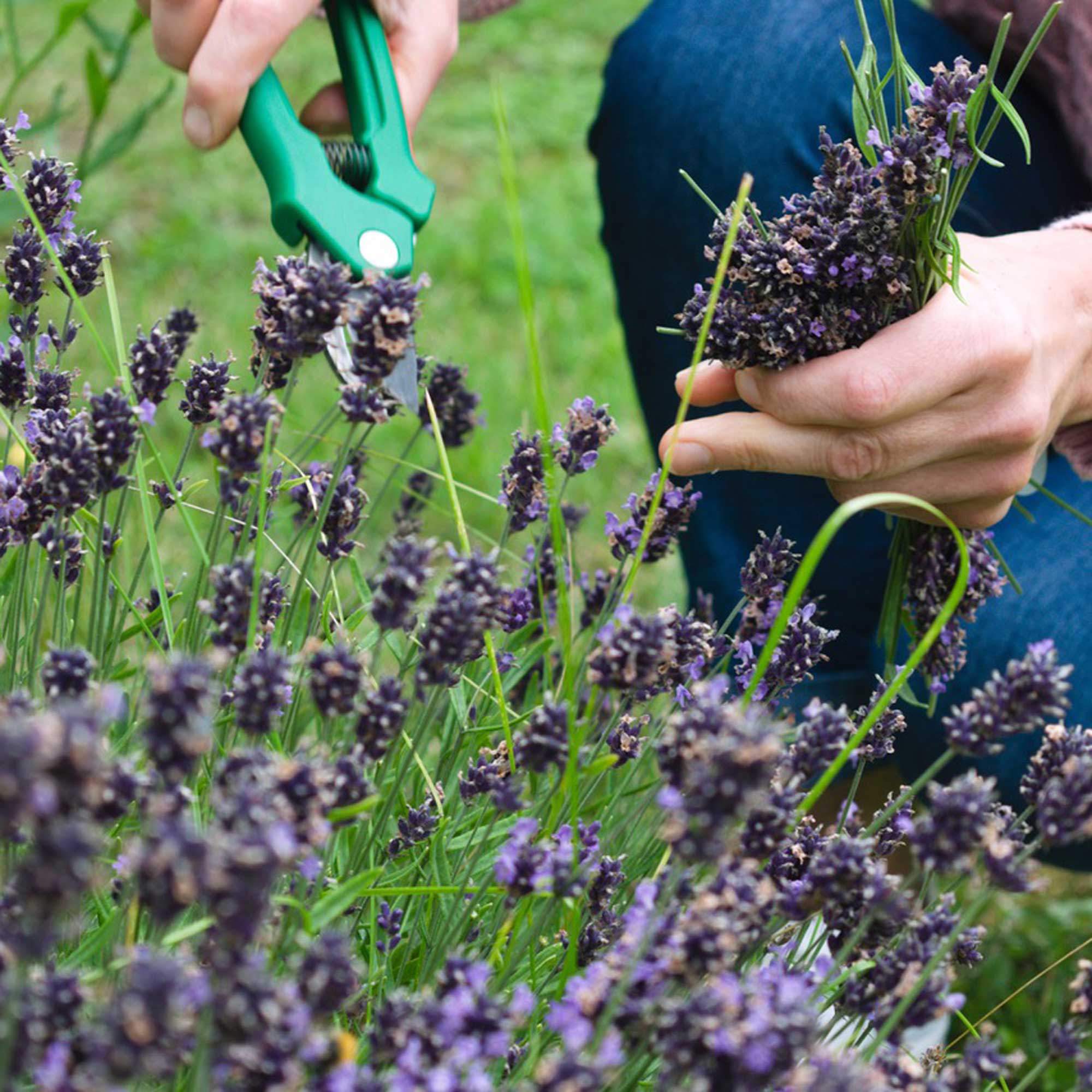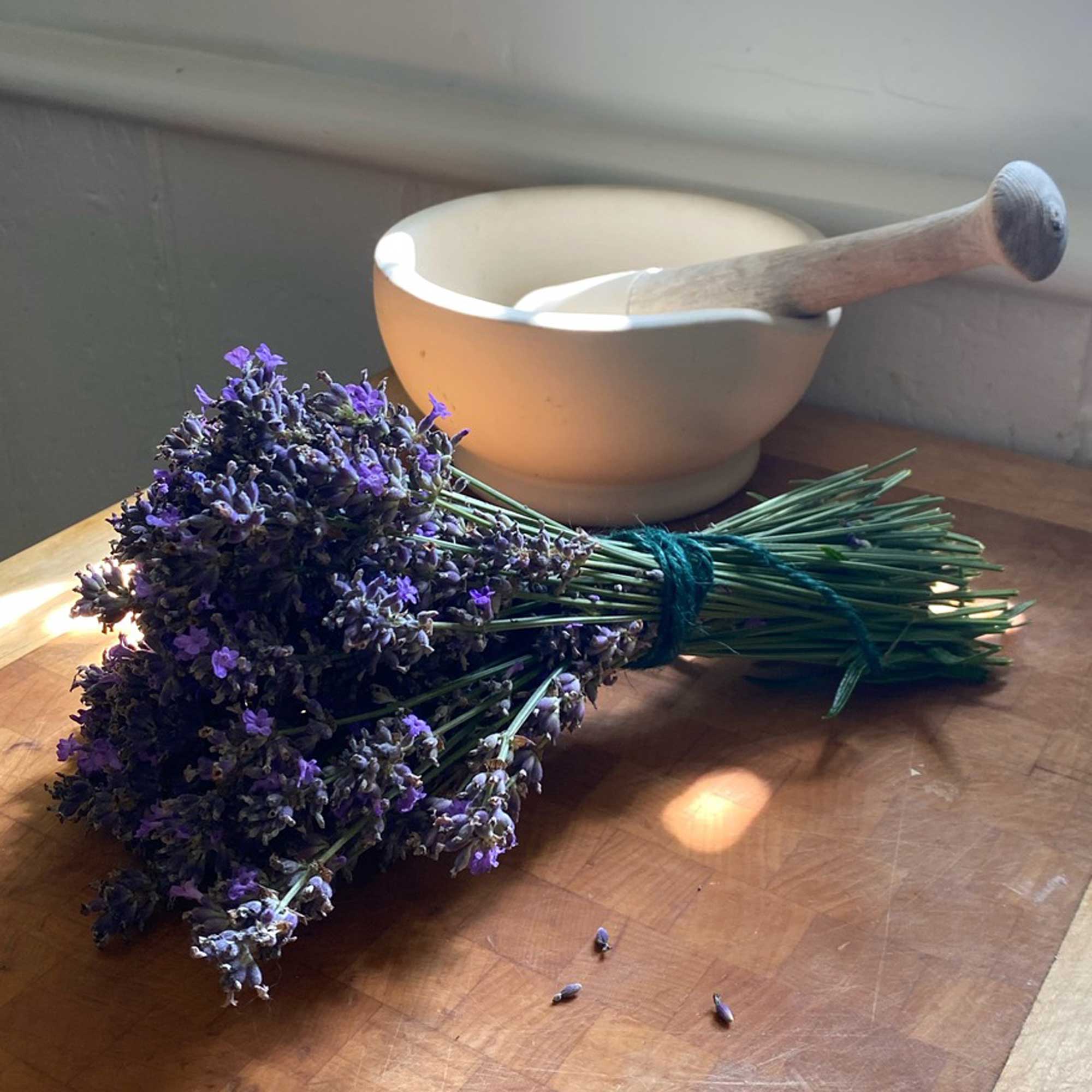How to dry lavender for sachets - Experts reveal the golden rules to follow
How to dry lavender buds and preserve their natural perfume in your home

Lavender sachets are little bags of fragrant heaven so it's no wonder making them is an age-old tradition. Lavender is calming as well as invigorating and once you know how to dry lavender for sachets the results offer so many benefits to your home and well-being.
Once you’ve mastered the art of how to grow lavender, your pots and borders will flourish with colour, fragrance and wildlife. So, why not bring some of that invigorating aroma into your home by harvesting and drying garden lavender yourself?

Learn how to propagate lavender in your garden and you’ll have a constant seasonal lavender source to harvest in order to make lavender sachets for your home or as well as gifts for family and friends.
Tucked in drawers, laid in linen cupboards or hung in wardrobes, little lavender sachets are packed with organic power and will ward off bugs, absorb moisture, and radiate aroma. In fact, lavender is one of the main scents that clothes moths hate.
The scent of lavender has benefits to our health too. 'It is important to ensure that your routine is as relaxing as can be to reduce stress before you go to bed. Calming scents such as lavender can help to further reduce anxiety and is a great addition to an evening routine, helping to provide you with a more tranquil sleep,' says Silentnight sleep expert, Sally Bonser.
How to dry lavender for sachets
Knowing how to dry lavender for sachets properly will make a huge difference to a lavender bag's quality and longevity.
What you will need
- Fresh growing lavender in mid-bloom
- Sickle, snips or scissors , we love the Gardena HerbCut ones available on Amazon
- A basket or wide-topped container for collecting cut stems
- Rubber bands or string to tie a bundle
- An empty wall or space to hand or suspend drying lavender.
- Paper clips for hanging dried lavender
- A large paper bag or container to catch and store dried lavender buds
How to harvest lavender
Look for lavender buds that haven’t fully opened as these will still contain plenty of natural essential oils and that’s what smells so lovely.
Get the Ideal Home Newsletter
Sign up to our newsletter for style and decor inspiration, house makeovers, project advice and more.
Lindsay del Carlo from Renee’s Garden says 'I like the lavender to be just at this stage where it blooms from the bottom up on the flower spikes. When it’s about halfway bloomed I start cutting that way the essential oils [are just] coming out and it’s really fragrant. '
Jenn O’Neal from Pepper Harrow Farm agrees 'If your buds are [fully] open they are more prone to falling off when you do the drying process. But when they are closed they keep their colour and keep their buds on after they’ve been dried.'
To cut your lavender from the plant, go through and bunch together the lavender stems in a nice handful. Then take a sickle (a short-handled garden tool with a semi-circular blade), snips or scissors and cut down to the leaves. When cutting be sure not to cut back lavender too far into the plant's wood.
Place the handful in a basket or bucket and continue until you have enough to dry.

How to prepare cut lavender for drying
Separate your lavender harvest into bundles ensuring the stems are about the same height. Then, tie each bunch with a rubber band or string in the floristry method at the bottom.
Look for a cool, dry, space to hang and dry the lavender. Ensure the area is moisture free and has good air circulation. This speeds up the drying process and prevents mould.
Hang the tied bundles upside down from lengths of string along a wall (like a washing line), secured with paper clips or pegs. Alternatively, suspended from a ceiling, a shaded pergola or even a window frame.
'Gather the lavender into bunches and tie it with a string; you can then hang it up in a dry area. Don't dry it flat! In Provence, I hang it up on my covered terrace. In England, a covered area or shed would suffice. It mustn't get wet or damp once it has been cut,' explains Linda Rondelez, maker of handmade lavender gifts at LinlouGifts.
After two to four weeks the lavender will have fully dried and is ready to be stripped.
'You'll find the drying time can vary based on your local climate, but it generally ranges from one week to around a month,' explains Ash Read, founder of Indoor Plants.

How to remove dried lavender buds and flowers from stems
Once dry the lavender stems should be fully dehydrated and brittle.
To remove the dried buds and flowers first shake the bundles or stems into a large paper bag or container. Another method is to roll each bundle between your hands over a container. Lastly, remove any stubborn flower heads by running your fingers gently along the stems.
Discard the empty stalks and stems and store your dried lavender pods in an airtight container ready for making your delightful lavender sachets.
'Remember, the dried lavender must be stored away from sunlight, heat, and humidity to retain its scent and prevent rot. It's like fine wine, proper storage makes all the difference!' advises Ash Read.

FAQs
When’s the best time to dry lavender for sachets?
'The best time for drying lavender is actually when it is in full bloom. It seems wrong to cut it when it is at its most beautiful, but this is the optimum time for producing good-scented lavender. Many people wait until August when it is quite dried out but this is far too late and the lavender will have no fragrance,' explains Linda Rondelez
What is the best material to choose when making lavender sachetsts?
Naturally breathable fabric that allows lavender's essential oils to be released is the most effective lavender bag fabric to choose from. Silk organza, hessian, linen or 100% cotton is most practical.
How long do lavender bags last?
Dried lavender should keep its fragrance for at least a season. To prolong its smell Ruth Ridley from Dried flower Craft says 'If you’d like to preserve the dry grains to use another time, simply put them in a plastic bag or air-tight container. For best results, store in a cool dry place out of sunlight. The flower should naturally retain its fragrance for many months if stored this way.'
Rachel Homer has been in the interiors publishing industry for over 15 years. Starting as a Style Assistant on Inspirations Magazine, she has since worked for some of the UK’s leading interiors magazines and websites. After starting a family, she moved from being a content editor at Idealhome.co.uk to be a digital freelancer and hasn’t looked back.
-
 Wood drenching is the calming new twist on the colour drenching trend – here’s how to make the look work in your home
Wood drenching is the calming new twist on the colour drenching trend – here’s how to make the look work in your homeIt’s easier than ever to embrace natural materials
By Maddie Balcombe
-
 Aldi is launching a £200 day bed with four different features - its sleek design is suited to the whole family
Aldi is launching a £200 day bed with four different features - its sleek design is suited to the whole familyYou don't want to miss out on this Specialbuy
By Kezia Reynolds
-
 How to set up a drip watering system that saves water and a lot of effort
How to set up a drip watering system that saves water and a lot of effortKeep your plants hydrated (and your water bill down) with this clever garden watering solution
By Natalie Osborn